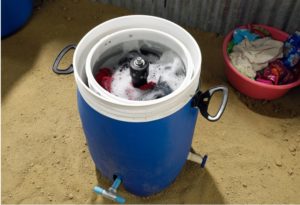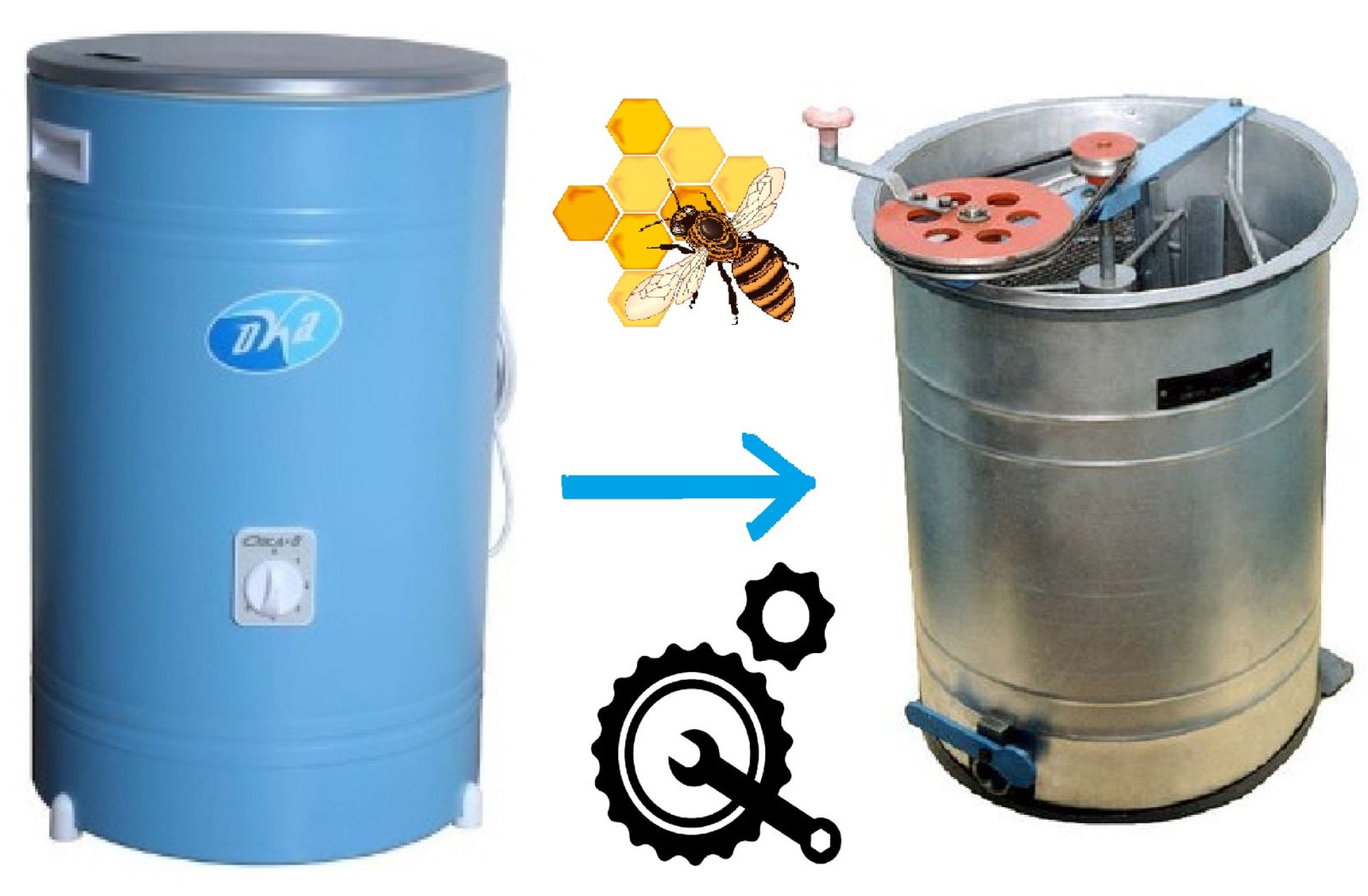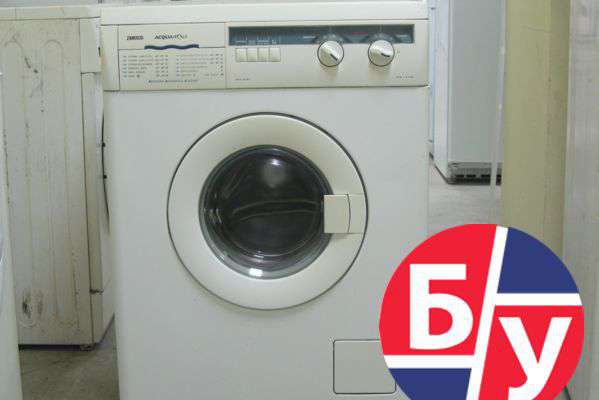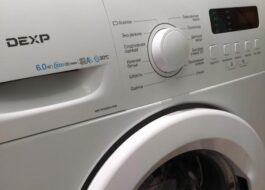Homemade washing machine
 People living in a noisy city often go to the countryside during vacations or weekends. And such a pleasant vacation can be ruined, for example, by a broken washing machine. There is a need to return to the city several tens of kilometers away, buy a new device, and organize its delivery to the site. Not everyone knows that you can make a homemade washing machine from improvised materials. This way you will solve the problem without wasting energy on exhausting trips and money on purchasing equipment. Let's figure out how to make your own washing machine.
People living in a noisy city often go to the countryside during vacations or weekends. And such a pleasant vacation can be ruined, for example, by a broken washing machine. There is a need to return to the city several tens of kilometers away, buy a new device, and organize its delivery to the site. Not everyone knows that you can make a homemade washing machine from improvised materials. This way you will solve the problem without wasting energy on exhausting trips and money on purchasing equipment. Let's figure out how to make your own washing machine.
How and from what is it more profitable to make?
Trying to make things easier for yourself, the first step will be to try to fix the broken equipment. On the one hand, this is correct, but on the other hand, in most cases you will still have to organize a trip to the store to purchase replacement parts. If you stood at the dacha activator washing machine type “Baby”, then repairing it is too tedious and economically impractical.
What to do if there is no opportunity to go to the city? You can assemble a washing machine with your own hands from parts lying around in a country shed, taking some elements from worn-out equipment. Ideally, the designed product should eliminate the need for welding and turning. Assembly will take several hours.
Assembling the washing device
Before assembling the washing machine with your own hands, you need to figure out what kind of work lies ahead. It is important to understand whether you can find the necessary parts and components at your summer cottage. The design of the washer looks like this:
As a drive, you can use, for example, an electric motor from the Skillful Hands machine. Use a large enamel pan as a tank. The activator and its bushing must be removed from the failed washing machine.
You should make a device yourself that will ensure the washing process. To do this, you need to take a plastic disk, about 8 mm thick, the diameter of which will exceed the circumference of the container used as a tank by 10 cm. A hole with a diameter of 1 cm is drilled in the center of the prepared circle, into which the motor shaft will subsequently be inserted. The electric motor is secured to the disk with stator bolts; their dimensions are perfect in this case.
It is advisable to place a rubber gasket between the disc and the engine.
Afterwards you need to work on the activator. Take a saucepan of suitable size and drill a hole in its bottom. The activator sleeve is inserted there and tightened from the inside with a nut. The activator axis is placed in the bushing from the outside.
Then you need to connect the activator to the electric motor. The engine shaft at the end has a thread with a diameter of 10 mm. The standard activator is also equipped with a threaded centimeter axis. If you don’t have a ready-made bushing of similar dimensions to connect the two axles at your dacha, you can proceed as follows. Take an M10 bolt and three M10 nuts and screw them onto it. Place a steel tube of a suitable diameter on the resulting structure and roll its ends. By bending the pipe from the bolt, you will receive a reliable bushing of the desired size. The homemade bushing must be half screwed onto the electric motor shaft, and the other end onto the activator axis.
Thus, your DIY washing machine is almost ready.There is also a tank where water will be poured and laundry will be loaded, as well as a working device that starts the washing cycle. It is advisable to cover the engine, which, in fact, is outside, as an option - with part of the body from an old vacuum cleaner. The protective cover is attached using special claws.
It is important to connect the wiring to the motor correctly. The wire connections will be under the “hood”. The power cable is also recessed under the casing; only a small part of it with a plug remains outside.
To ensure that the disk is held in place when the equipment is operating, 6 caps from ordinary plastic bottles should be drilled to its bottom. This will allow the lid not to move from the center while the homemade washing machine is operating. Also, it is better to rubberize the upper part of the tank, in the example described - an enamel pan. A rubber tube is suitable for these purposes. Cut it lengthwise into 2 parts and carefully place each half on the edges around the perimeter of the container.
How does the machine work?
The washing progress will be as follows. The laundry is placed in the tank, and washing powder or liquid detergent is poured here. Next, the items are filled with water at the required temperature.
The amount of water and clothing that the electric motor will “pull” is calculated experimentally.
The device is immersed in the tank. The plugs located on the lower surface of the disk are located around the circumference of the tank on the outside. Then you should start the engine. There is no additional need to secure the operating system in the container. The speed of the electric motor shaft will be high, this will ensure high quality laundry washing.
A significant disadvantage of a homemade washing machine in this case will be its low performance.Due to the modest power of the electric motor and the small volume of the tank, you can wash about 1 kg of dry laundry at a time, which is equivalent to, for example, five men's shirts. If you load more things, the quality of cleaning will be much worse. To increase the performance of the washing machine, you can look for a more powerful engine and increase the tank capacity.
Interesting:
Reader comments
- Share your opinion - leave a comment





















Add a comment